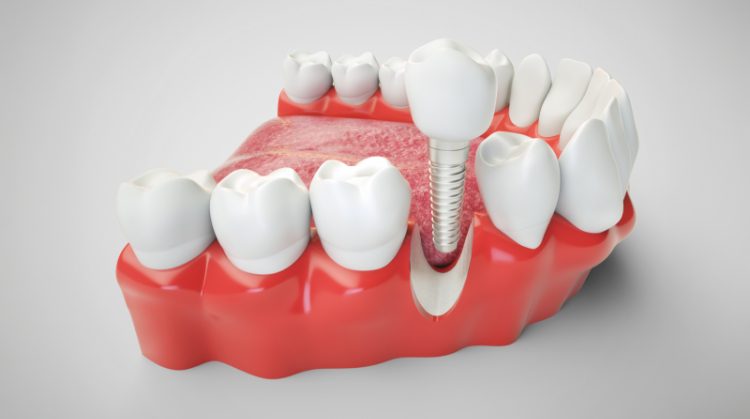By Dr. Belinda Gregory-Head, Dental Implant Partners, San Francisco
Full mouth reconstruction is one of the most advanced and transformative procedures in restorative dentistry. Unlike cosmetic treatments that address surface-level aesthetics, full mouth reconstruction focuses on rebuilding and rehabilitating the oral cavity in both form and function. This process often integrates prosthodontics, periodontics, endodontics, orthodontics, and oral surgery, creating a tailored and interdisciplinary approach to care. As a dentist, I see full mouth reconstruction as not just a clinical treatment, but a life-changing intervention that restores confidence, functionality, and long-term oral health.
Patients who need full mouth reconstruction usually present with complex conditions. These may include severe wear from bruxism, widespread decay, missing teeth, trauma, or congenital disorders that compromise occlusion and aesthetics. Because of this complexity, the treatment is highly individualized, and no two cases are exactly alike. The primary objective is not just to replace what is missing, but to reestablish harmony between the teeth, gums, bite, jaw joints, and facial structure.
This guide outlines the process I use at Dental Implant Partners to achieve comprehensive rehabilitation for my patients. Each stage requires careful assessment, planning, and execution to ensure long-term success. In the following sections, I will walk you step by step through the process, from initial evaluation to the final placement of restorations, and explain the clinical reasoning behind each stage.

Step 1: Comprehensive Diagnostic Evaluation
The first step in a full mouth reconstruction is an exhaustive diagnostic evaluation. This process goes far beyond a standard dental examination and requires advanced imaging, diagnostic casts, and sometimes digital simulations. At this stage, the health of the teeth, periodontal tissues, occlusion, temporomandibular joints (TMJ), and supporting bone structure is carefully assessed. Cone-beam computed tomography (CBCT) scans often play a pivotal role in evaluating bone density, sinus position, and structural integrity for implant planning.
Functional analysis is equally critical. Many patients requiring full reconstruction suffer from collapsed vertical dimension, malocclusion, or dysfunctional bite mechanics. These issues can place excessive stress on teeth, restorations, and joints, ultimately leading to chronic discomfort or accelerated wear if not corrected. Mounted diagnostic models and occlusal analysis tools are used to simulate jaw movements, which makes it possible to predict how future restorations will perform under functional load.
In addition to the clinical data, the patient’s esthetic concerns, lifestyle factors, and medical history are also prioritized. For example, a patient with uncontrolled diabetes may require modifications to the surgical timeline to ensure predictable healing. Likewise, a patient with a high smile line will need precise consideration of gingival architecture and ceramic shade selection. This diagnostic phase lays the foundation for the entire treatment plan and ensures there are no unforeseen complications later in the process.
Step 2: Treatment Planning and Case Presentation
Once the diagnostic evaluation is complete, the next stage involves creating a comprehensive treatment plan. This is not a generic template but a customized blueprint that aligns with the patient’s functional, esthetic, and financial goals. At Dental Implant Partners, the plan is developed in collaboration with specialists when necessary, such as periodontists for soft tissue management, orthodontists for pre-restorative alignment, or oral surgeons for complex extractions and grafting.
A critical component of treatment planning is sequencing. Each procedure must be placed in a logical order that accounts for healing time, occlusal stability, and prosthetic requirements. For example, implant placement cannot proceed until sufficient bone is present, which may necessitate bone grafting or sinus augmentation first. Similarly, provisional restorations may be required during orthodontic or surgical phases to maintain functionality and appearance. The treatment plan should act as both a roadmap and a communication tool to keep the patient engaged and informed throughout the process.
During the case presentation, time is dedicated to explaining not only the “what” but also the “why” of each step. Patients often feel overwhelmed by the complexity of full mouth reconstruction, so clear communication is vital. Digital imaging and mock-up models are used to visually demonstrate expected outcomes and alternatives. This transparency helps patients make informed decisions, understand the level of commitment required, and build trust in the process.
Step 3: Periodontal Therapy and Foundation Stabilization
Healthy gums and bone are the bedrock of a successful reconstruction. Therefore, the first clinical interventions typically focus on stabilizing the periodontal foundation. If active periodontal disease is present, scaling and root planing, laser therapy, or even surgical interventions may be necessary to eliminate infection and regenerate tissue. Without a stable periodontal foundation, any restorative work placed will be at high risk of failure.
In cases of significant bone loss, grafting procedures are often required. Autogenous, allograft, or xenograft materials may be used depending on the defect’s size and the patient’s biological response. In addition, platelet-rich fibrin (PRF) may be incorporated to accelerate healing and enhance soft tissue integration. The goal is to provide adequate bone density and volume for both natural tooth support and potential implant placement.
Soft tissue architecture is also addressed during this phase. For patients with a “gummy smile” or uneven gingival margins, crown lengthening or gingival recontouring may be performed. This not only ensures a healthier foundation but also creates symmetry and enhances the final esthetic result. Only once the gums and bone are healthy and stable do we proceed to the next stages of reconstruction.
Step 4: Addressing Tooth Decay, Endodontic Issues, and Extractions
The next phase of full mouth reconstruction involves addressing compromised teeth. Carious lesions, fractured teeth, and non-vital pulps must be treated systematically. Depending on severity, composite restorations, onlays, or full-coverage crowns may be recommended. When the pulp chamber or root canals are infected, endodontic therapy is often required to preserve the tooth and eliminate infection before restorative procedures can begin.
Some teeth, however, may not be salvageable. Teeth with vertical root fractures, advanced periodontal involvement, or insufficient remaining structure often need extraction. The decision to extract versus save a tooth is always made with long-term prognosis in mind. In some cases, immediate implant placement may be possible; in others, site preservation with bone grafting will be necessary to prepare for a future implant.
An important aspect of this phase is maintaining symmetry and occlusal balance. For example, if posterior support is compromised on one side, it can create functional overload on the opposite side, leading to further wear or joint problems. By methodically addressing each tooth and site, the dental arches remain balanced as treatment progresses toward full rehabilitation.
Step 5: Orthodontic and Occlusal Correction
In many cases, orthodontic intervention is required to create the optimal foundation for restorative work. Malaligned teeth, deep bites, crossbites, or open bites can significantly complicate the reconstruction process. By correcting these issues with clear aligners or fixed orthodontics, proper spacing, alignment, and angulation can be achieved to support prosthetics more predictably.
Orthodontic correction also plays a critical role in improving occlusal dynamics. A stable and functional bite requires that the teeth come together in harmony with the temporomandibular joints and supporting muscles. Without this, restorations are at risk of premature failure due to uneven stress distribution. Orthodontics can also help increase vertical dimension when collapsed due to attrition, creating more restorative space for crowns and bridges.
This stage can be time-consuming, sometimes lasting several months, but it is often indispensable for complex cases. Patients must understand that while orthodontics may delay the final result, it significantly improves long-term success and comfort. Skipping this step would compromise the quality and durability of the entire reconstruction.

Step 6: Implant Placement and Surgical Interventions
Dental implants form the cornerstone of many full mouth reconstructions, especially when multiple teeth are missing. Implant surgery requires meticulous planning using CBCT imaging and digital surgical guides to ensure precise angulation and placement. Each implant must be placed in an area of adequate bone density and aligned to support the future prosthetic load.
Surgical interventions often extend beyond implant placement. Sinus lifts, ridge augmentations, and nerve repositioning procedures may be required to create suitable conditions for implant integration. These procedures demand advanced surgical expertise and a deep understanding of maxillofacial anatomy. Healing times vary, but osseointegration typically requires three to six months before the implants can reliably support restorations.
During this phase, great emphasis is placed on provisionalization. Patients should not be left without teeth during the healing process, so temporary prosthetics are used to maintain function and esthetics. These temporaries also serve as a trial run, allowing occlusion, phonetics, and smile design to be fine-tuned before finalizing the permanent restorations.
Step 7: Provisional Restorations and Functional Testing
Provisional restorations are not simply placeholders; they are critical diagnostic tools. Once implants have integrated and foundational therapies are complete, provisional crowns or bridges can be fabricated to replicate the planned final result. These restorations allow patients to test function, phonetics, and esthetics in real-world conditions.
Through this trial phase, the bite can be evaluated under functional stresses. If adjustments are needed, they can be made at the provisional stage rather than after final prosthetics are fabricated. This helps avoid complications such as joint discomfort, muscle strain, or premature wear on new restorations. Patients often report that this stage gives them confidence as they can “test drive” their new smile.
Additionally, provisional restorations allow for refinement of soft tissue contours. Properly contoured provisionals can guide gingival healing and shape emergence profiles around implants, leading to more natural-looking final restorations. This stage often makes the difference between a good result and an exceptional one.
Step 8: Fabrication of Final Restorations
Once the provisional phase confirms functional and esthetic parameters, the process moves on to fabricating the final restorations. This stage involves selecting the appropriate restorative materials, which may include zirconia, lithium disilicate, or porcelain-fused-to-metal, depending on the location and functional demands of the tooth. Material selection is guided by considerations such as strength, translucency, wear resistance, and biocompatibility.
The process is highly technical and requires close collaboration with the dental laboratory. Detailed impressions or digital scans are taken, and precise shade matching is performed to ensure seamless integration with natural dentition. In some cases, digital smile design technology may be used to overlay the planned restorations onto facial photographs, providing both the patient and the dental team with a clear visualization of the outcome.
Each restoration is then carefully tried in, adjusted, and cemented or screw-retained depending on the prosthetic design. Occlusal contacts, phonetics, and esthetics are meticulously verified to ensure optimal performance. The final result should restore full function, harmonize with facial features, and provide a durable and esthetically pleasing smile.
Step 9: Occlusal Adjustment and Bite Equilibration
Even after final restorations are placed, fine-tuning is often required. Occlusal adjustment ensures that the bite is evenly distributed and that no single restoration or tooth is bearing excessive force. This is crucial for protecting both natural dentition and prosthetic components from premature failure.
Equilibration may involve minor reshaping of occlusal surfaces or, in some cases, the fabrication of a custom occlusal guard to protect against nocturnal bruxism. Many patients undergoing full mouth reconstruction present with a history of clenching or grinding, and without protective measures, their new restorations could quickly deteriorate.
This step is often underestimated but is one of the most critical for long-term success. A stable, comfortable, and balanced bite supports not only the longevity of the prosthetics but also overall jaw health. It is here that form and function are harmonized for sustainable results.
Step 10: Maintenance, Follow-Up, and Long-Term Prognosis
Full mouth reconstruction does not end with the placement of final restorations. Long-term maintenance is essential to protect the investment and ensure continued oral health. Patients are typically placed on a strict follow-up schedule with professional cleanings every three to four months, depending on their periodontal status. These visits allow tissue health, prosthetic integrity, and occlusal stability to be carefully monitored.
Patient education is equally important. Proper hygiene practices, including the use of interdental brushes, water flossers, and specialized implant cleaning aids, are emphasized. Patients are also instructed to wear protective night guards when indicated and to report any discomfort or unusual wear immediately. Preventive care is the cornerstone of protecting the extensive work done during reconstruction.
With diligent maintenance and compliance, full mouth reconstructions can last decades. As a dentist, it is profoundly rewarding to see patients regain their ability to smile, chew, and speak without hesitation. The journey is demanding, both for the patient and the clinician, but the outcome often represents one of the most life-changing treatments available in modern dentistry.

About Dental Implant Partners
At Dental Implant Partners, I have had the privilege of serving patients in San Francisco for over 25 years. What began as my prosthetic practice has grown into a team of experienced prosthodontists, general dentists, and hygienists who share my dedication to exceptional restorative care. Our hygienists are unique in that they were trained as dentists and have been part of our practice for many years, which is why our patients trust and love them.
We provide a full spectrum of restorative dentistry, from simple fillings and veneers to comprehensive full mouth reconstructions on dental implants. For patients who are not candidates for implants, we are equally skilled in crafting high-quality dentures that restore function and esthetics. Our philosophy is centered on long-term relationships, careful and ethical care, and delivering results of the highest quality in a comfortable, welcoming environment.
Every day, my team and I are inspired by the opportunity to restore not only smiles but confidence and quality of life. Our suite overlooks the San Francisco Bay, and we love that patients feel relaxed and cared for when they visit us. If you are considering full mouth reconstruction or have questions about your dental health, I invite you to schedule a consultation with us. We would love to help you take the first step toward a healthy, functional, and beautiful smile.




